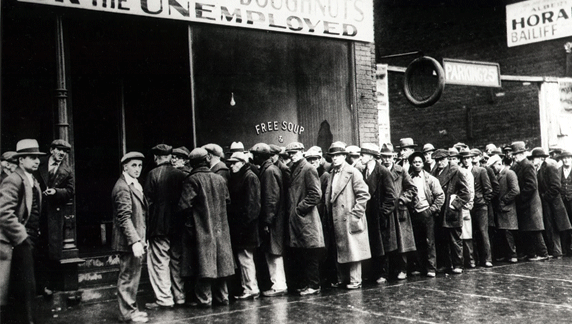How Marxism explains unemployment

At the end of 1950, the unemployment rate in Australia stood at 0.2 percent – the lowest figure ever. For two decades, until the end of the 1960s, it was commonly said that the government of the day would fall if unemployment passed 2 percent.
Today unemployment of 5-6 percent is considered “normal”. In most of the rest of the world, at least in the developed countries, there have been similar increases in unemployment rates. Why is this the case? Or, to focus better on the real question: why are there nearly always large numbers of people who can’t find jobs?
The fundamental reasons are that capitalism both creates and needs unemployment.
As Karl Marx explained in his revolutionary economic writings, capitalists’ investments can be divided into two parts: the part that hires workers, and the part that buys or rents the means of production – machines, raw materials, factories.
As capitalism grows, two processes reduce the part of capital that hires workers. Competition leads to concentration: the big fish eat the little fish, or two medium or large companies merge to become a bigger fish. The merged company enjoys greater “economies of scale”, which basically means that one worker can operate a larger amount of the company’s capital. As anyone who follows the business news even slightly can testify, whenever there is a merger of two firms, one guaranteed result is lay-offs.
The other process is the capitalists’ drive to increase productivity, which is imposed by competition. Greater productivity, by definition, means producing a larger number of products from a smaller investment. One way to do this is to drive down wages and drive up working hours. But there are physiological limits to that. The other, more lasting and basically unlimited, way of increasing productivity is to provide workers with more efficient machines or tools.
But if workers switch to using more efficient machines, then of course fewer workers are required to produce any given number of products. In a capitalist system, “labour-saving” technology necessarily destroys the jobs of some workers.
This doesn’t mean that the number of jobs falls continuously. Particular industries can find new markets and expand; new industries can be created that need workers; the demand for labour rises and falls with changes in the business cycle. But it does mean that capitalism has an inbuilt tendency to drive workers out of production.
And that is precisely the condition that capitalism needs. Capitalists need a pool of workers – Marx called them the “industrial reserve army” – who can be drafted into and thrown out of production according to the capitalists’ changing requirements. When the economy is improving, they need workers immediately: hire some of the unemployed. When business turns down, save money – lay them off. You can always get more when things pick up.
The expansion and contraction of the industrial reserve army can happen on a truly massive scale in times of crisis. During World War II, major belligerent countries drafted millions of working men into their military forces and drew millions of women into paid work to replace them. When the war was over, they pushed many women back into the role of unpaid “home makers”. Most of these women were not counted as unemployed in the official statistics, but they were certainly part of the industrial reserve army.
Whatever the situation of the economy, the pool of unemployed helps keep workers’ wages and other demands down. Capitalist economists talk about the supply and demand of labour. Marx pointed out:
“The industrial reserve army, during the periods of stagnation and average prosperity, weighs down the active labour army; during the periods of over-production and paroxysm, it holds its pretensions in check. [The industrial reserve army] is therefore the pivot upon which the law of demand and supply of labour works. It confines … this law within the limits absolutely convenient to … exploitation and to the domination of capital.”